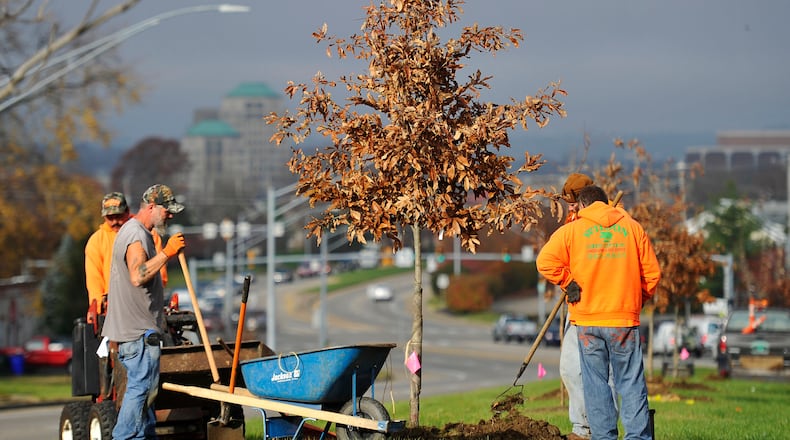“We’re going to (buy) 350 a year,” Hamilton’s Municipal Arborist Dave Bienemann said. “We’re going to give them out, half to citizens, to plant in their yard to reforest the canopy across the city.”
The other half will be planted across the city, he said, in green spaces, city parks and anywhere they have open space.
“It’s going to be a pretty big project, and part of the grant is to pay for an intern full-time, buy another water truck and some equipment,” he said.
Bienemann said they’ll look at purchasing keystone trees that are native to southwest Ohio “and the whole idea is to improve our ecosystem, pollinators.”
The Wilks Foundation was founded by the late Harry T. Wilks, and among his many passions were planting trees.
“Trees are very important for our health. Hamilton, when I grew up there, used to have lots of trees,” said daughter Barbara Wilks, who grew up on the heavily forested Columbia Road. “We’re still pretty lucky but the older ones are starting to die off and it’s important to replace them with new trees.”
New trees also help beautify the city in addition to being a health measure, she said, adding trees are “a big part of our identity. It’s kind of a forest city.”
Bienemann is a city department of one with a few interns from Miami and the University of Cincinnati. He has several research project going on and looking for more grant money to plant more trees in Hamilton. He currently administers about $1.2 million in grants, and is always looking for more.
“There’s another $1 million floating out there,” he said.
The Wilks Foundation grant does not require the city to commit any matching funds. Most of the grant, about $112,000, will be spent on the purchase of the trees. Nearly $85,000 will be for the new vehicle purchase, equipment and the salary for a city intern.
The remaining funds of the grant, about $3,000, will go to administrative costs managing the program.
The new trees will be planted and distributed to residents later this year. The foundation requests and annual report, providing information on the types of trees planted and their locations.
“It’s a really great opportunity for our city. We’ll be doing a marketing program in August, roll it out in September,” he said.
About the Author

